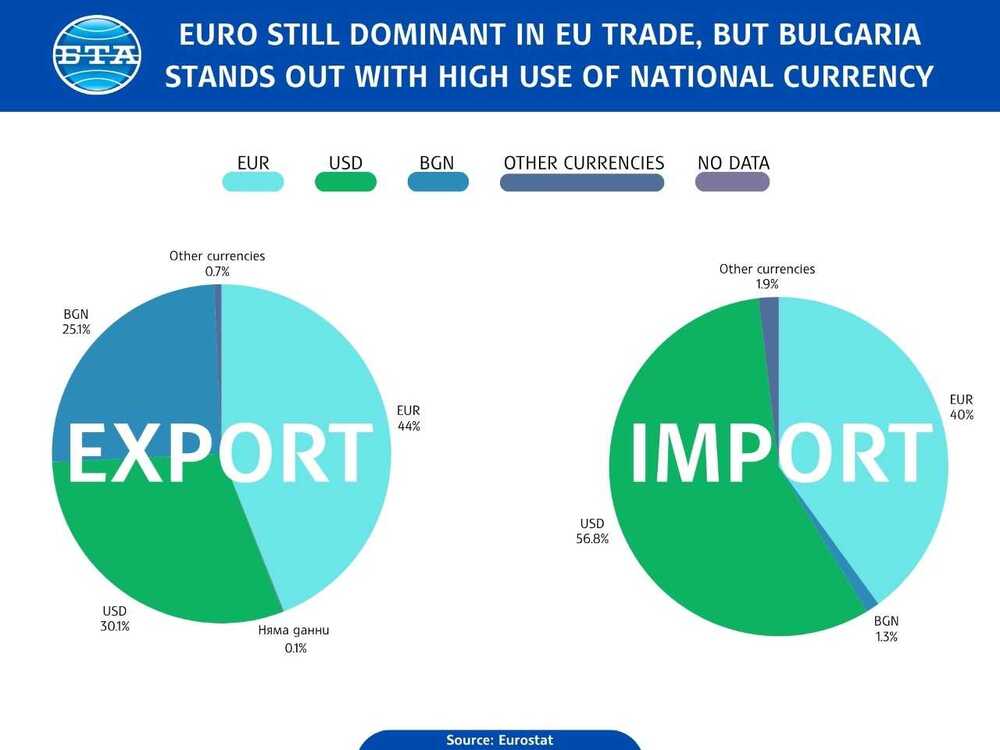site.btaEuro Still Dominant in EU Trade, But Bulgaria Stands Out with High Use of National Currency


In 2024, 25.1% of Bulgaria’s exports to countries outside the European Union were conducted in the national currency, the Bulgarian lev, placing it among the top EU member states using their own currencies in external trade, according to the latest data from Eurostat.
In total, 44% of Bulgaria’s exports were in euro, 30% in US dollars, and 0.7% in other currencies. Currency data was unavailable for 0.1% of the exports.
On the import side, 56.8% of goods entering Bulgaria were paid for in US dollars, 40% in euro, 1.3% in leva, and 1.9% in other currencies.
The euro remained the most used currency in EU exports overall in 2024, accounting for 51.7% of the bloc’s goods exports to the rest of the world. US dollars made up 31.4%, 3% were in other EU national currencies, and 13.4% in third-country currencies.
In 20 out of 27 EU member states, the euro was the leading export currency. The highest shares were observed in Slovenia (91.1%), Croatia (82.8%), and Lithuania (75%).
By contrast, six EU countries primarily used the US dollar for exports, with top shares in Cyprus (69%), Ireland (68.9%), and Greece (52.7%).
Among member states using their national currencies most for exports, Sweden led with 58.7%, followed by Bulgaria (25.1%) and Denmark (24%). In other non-eurozone countries like Poland, Romania, Hungary, and Czechia, the share ranged from 1.9% to 7.4%.
When it comes to EU imports, the US dollar dominated in 2024 with a 51.1% share, while the euro accounted for 39.7%. Other EU currencies were used in 1.6% of import transactions, and third-country currencies in 7%.
The dollar was the top import currency in 18 EU countries, led by Lithuania (65.5%), the Netherlands (63.8%), and Finland (63.5%). In the remaining 9 member states, the euro was the most used currency for imports, especially in Slovenia (82.8%), Latvia (65.2%), and Slovakia (65.1%).
Imports using EU national currencies other than the euro were most common in Czechia (23.9%) and Denmark (12.3%).
/VE/
news.modal.header
news.modal.text